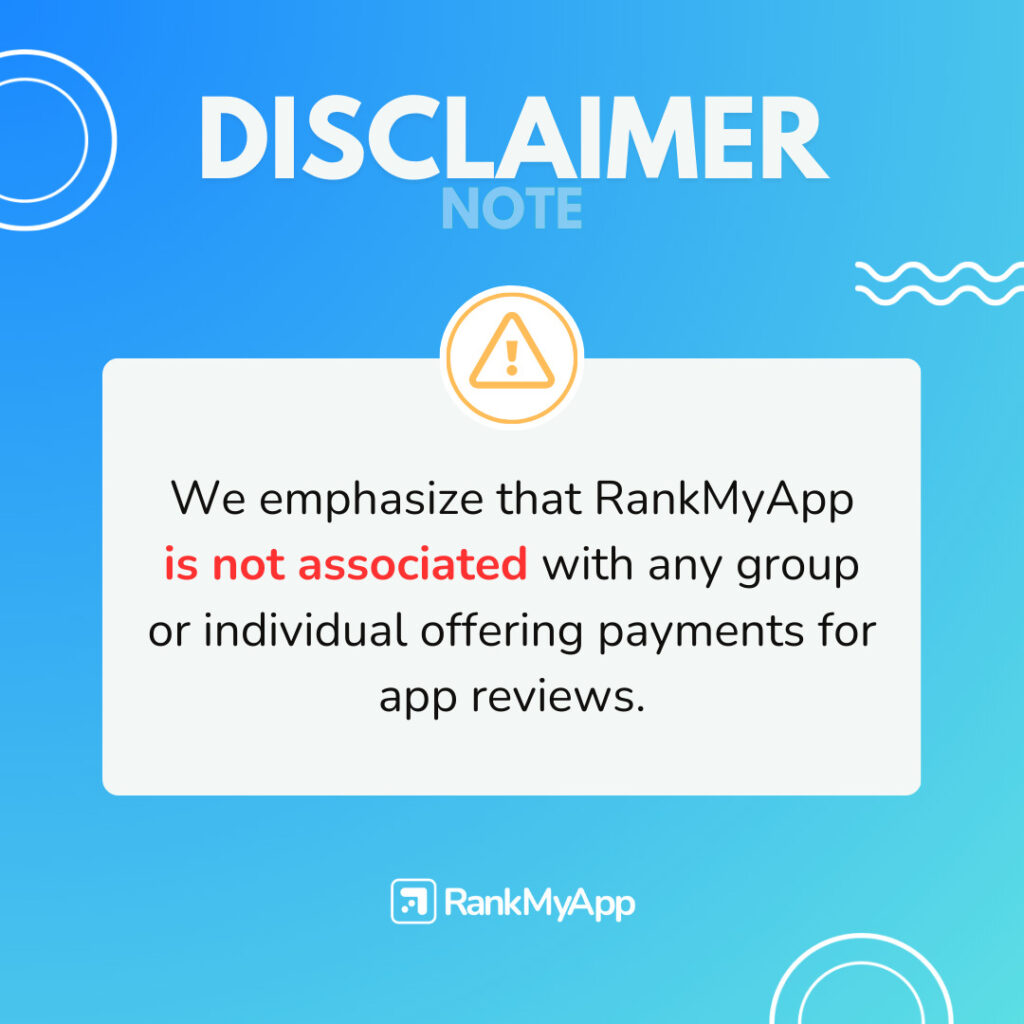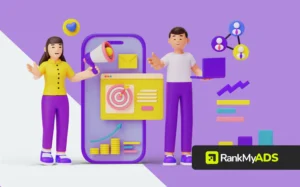Using the right ASO techniques can make all the difference in catapulting your app to success. It’s not just about having a great app; it’s also about ensuring that your target audience can find it amidst the sea of competing options in the app stores. If you’re eager to discover what strategies and tactics can elevate your app’s visibility and downloads, you’re in the right place.
In this article, we’ll delve into the top ASO techniques that have proven track records for generating significant results. From optimizing keywords to enhancing app metadata, we’ll explore a range of strategies designed to maximize your app’s potential and drive organic growth. So, whether you’re a seasoned developer or just starting out in the app industry, buckle up as we uncover the secrets to ASO success.

Get to know your target market
It’s always a good idea to research your target market. When you learn more about the users you are targeting, you will know how they search for new apps. Understanding your audience’s preferences, behaviors, and pain points allows you to tailor your app store optimization (ASO) strategy effectively. By diving deep into demographic data, user surveys, and competitor analysis, you can gain valuable insights into what drives your target users to download and engage with apps similar to yours.
This knowledge will help you determine the best app store keywords to use, which brings us to our next tip. Understanding the specific language and terms your target audience uses when searching for apps enables you to optimize your app’s metadata accordingly. From incorporating relevant keywords in your app title and description to selecting appropriate categories and tags, every aspect of your app’s metadata should resonate with your target users’ search queries. By aligning your ASO efforts with your audience’s search behavior, you can significantly enhance your app’s discoverability and attract more qualified users.
Moreover, understanding your target market goes beyond just keywords. It also involves comprehending their preferences, pain points, and desires. By empathizing with your audience, you can tailor not only your app’s features but also its messaging and visuals to resonate with them effectively. This deeper understanding allows you to craft compelling app store listings that not only rank well but also persuade users to choose your app over competitors’. In essence, getting to know your target market isn’t just about boosting visibility; it’s about building meaningful connections that drive long-term success for your app.
Find and use keywords
If you want to improve app store ranking, you have to target the right keywords. When deciding which app store keywords to choose, ask yourself:
- Is my target market likely to search these keywords?
- Are these keywords relevant to my app?
- Are these keywords too competitive for my app?
Understanding your target market, as discussed earlier, plays a crucial role in answering these questions. By aligning your keyword selection with your audience’s search behavior and preferences, you increase the likelihood of attracting qualified users who are genuinely interested in your app. Additionally, conducting thorough keyword research using tools like Google Keyword Planner, App Annie, or Sensor Tower can provide valuable insights into search volume, competition level, and trending keywords within your app’s niche.
Once you’ve chosen the best keywords, it’s essential to strategically place them in your app’s title and description. The app title holds significant weight in app store algorithms, so incorporating primary keywords here can greatly boost your app’s visibility. However, it’s crucial to maintain a balance between keyword optimization and readability to ensure that your title remains compelling and user-friendly. In the description, use keywords naturally while highlighting your app’s unique features, benefits, and value proposition. Remember, optimizing for keywords is not just about ranking higher in search results; it’s about attracting the right users and persuading them to download and engage with your app.
Pick the correct category
Placing your app in the correct category will help your target market find it. Some apps could belong in more than one category.
Just pick the one that most closely describes your app. If you aren’t sure which category that would be, place your app in the category that has the least competition.

Make screenshots and videos
An icon, screenshots, and app video help to improve app store ranking, which is why you need to create all three. Each element serves as a visual representation of your app and plays a vital role in attracting users’ attention and persuading them to download.
A good icon is simple, but still manages to grab attention. Icons are small, so make sure yours is easy to see. It should be visually appealing, convey the essence of your app, and stand out amidst the sea of competitors in the app store. Consider using bold colors, recognizable symbols, and clean designs to make your icon memorable and easily identifiable at a glance.
When making your screenshots, you will have to decide between creating vertical and horizontal images. Find out which orientation produces the best results by testing both of them. Experiment with different layouts, highlighting key features and benefits of your app in each screenshot. Remember to keep the visuals cohesive and engaging, maintaining consistency in design elements, color schemes, and fonts across all screenshots to reinforce your app’s brand identity and create a seamless user experience.
App videos need to be kept short because users don’t have lots of patience. Adding text overlays is also a good idea, just in case users have the video on mute. Create a captivating video that provides a quick overview of your app’s functionality, benefits, and unique selling points. Focus on showcasing the most compelling aspects of your app within the first few seconds to grab users’ attention instantly. Incorporate engaging visuals, catchy music, and concise messaging to keep viewers hooked and encourage them to explore further or download your app immediately. By leveraging screenshots and videos effectively, you can enhance your app store presence and increase user engagement, ultimately driving more downloads and improving app store ranking.
Do your best to get positive reviews
Positive reviews will boost your app’s reputation, which is highly effective for improving its app store rank. Plus, users who find your app will be more likely to download it after reading its great reviews. This will lead to an increase in user acquisition.
The best way to get positive reviews is to make sure your app provides a great user experience. You can also send push notifications, asking users to write reviews. Just don’t send too many messages.
Customize your app’s listing for each location
Using localization ASO strategies is a must if your app is offered in more than one location. You will need to customize your app’s keywords, screenshots, and descriptions for each area where your app is offered.
Localization goes beyond mere translation; it involves adapting your app’s listing to cater to the cultural nuances, language preferences, and search behaviors of specific target markets. Start by conducting thorough market research to understand the unique characteristics and preferences of each location where your app is available. Identify relevant keywords and search terms used by local users to ensure that your app ranks prominently in regional app stores and search results.
Additionally, tailor your screenshots and descriptions to resonate with the cultural norms and preferences of each target market. Use images and language that resonate with local users, highlighting features and benefits that are particularly relevant or appealing to them. By customizing your app’s listing for each location, you not only improve its visibility and discoverability but also enhance user engagement and increase the likelihood of downloads and positive reviews. Investing time and effort in localization ASO can significantly boost your app’s success and competitiveness in global markets.
Keep your app performing well
A well-performing app is going to have a much better chance of being a high-ranking app.
Here is what you need to do:
- Quickly resolve bugs and other issues;
- Keep crashes to a minimum;
- Update your app on a consistent basis,
- Make your app easy to navigate.
Analyze analytics
After you’ve implemented your ASO strategies, it’s crucial to keep an eye on how they are performing. Your app’s conversion rate will provide valuable insights into the effectiveness of your optimizations. Remember, the higher your app ranks, the more conversions it will have.
Fortunately, app stores offer robust analytics tools that allow you to track and analyze your app’s performance in real-time. These insights provide invaluable data on user behavior, keyword performance, and conversion rates, enabling you to identify areas for improvement and refine your ASO tactics accordingly.
RankMyApp is an excellent example of a comprehensive ASO platform that offers advanced analytics and optimization tools tailored to maximize your app’s visibility and performance in the app stores. By leveraging RankMyApp’s insights and recommendations, you can fine-tune your ASO strategy, increase your app’s rankings, and ultimately drive more organic downloads and revenue.
Conclusion
Implementing effective ASO techniques can propel your app to the top of the app store search results. Once your app has attained this coveted position, more users will find it. However, achieving and maintaining high rankings requires continuous monitoring, analysis, and optimization.
But you don’t have to do it alone. You can get help from app store optimization services like RankMyApp. Their expertise and tools can streamline the ASO process, saving you time and effort while maximizing your app’s visibility and success.
If you need help with ASO, don’t hesitate to contact a mobile specialist today! Your app’s future success depends on it.





